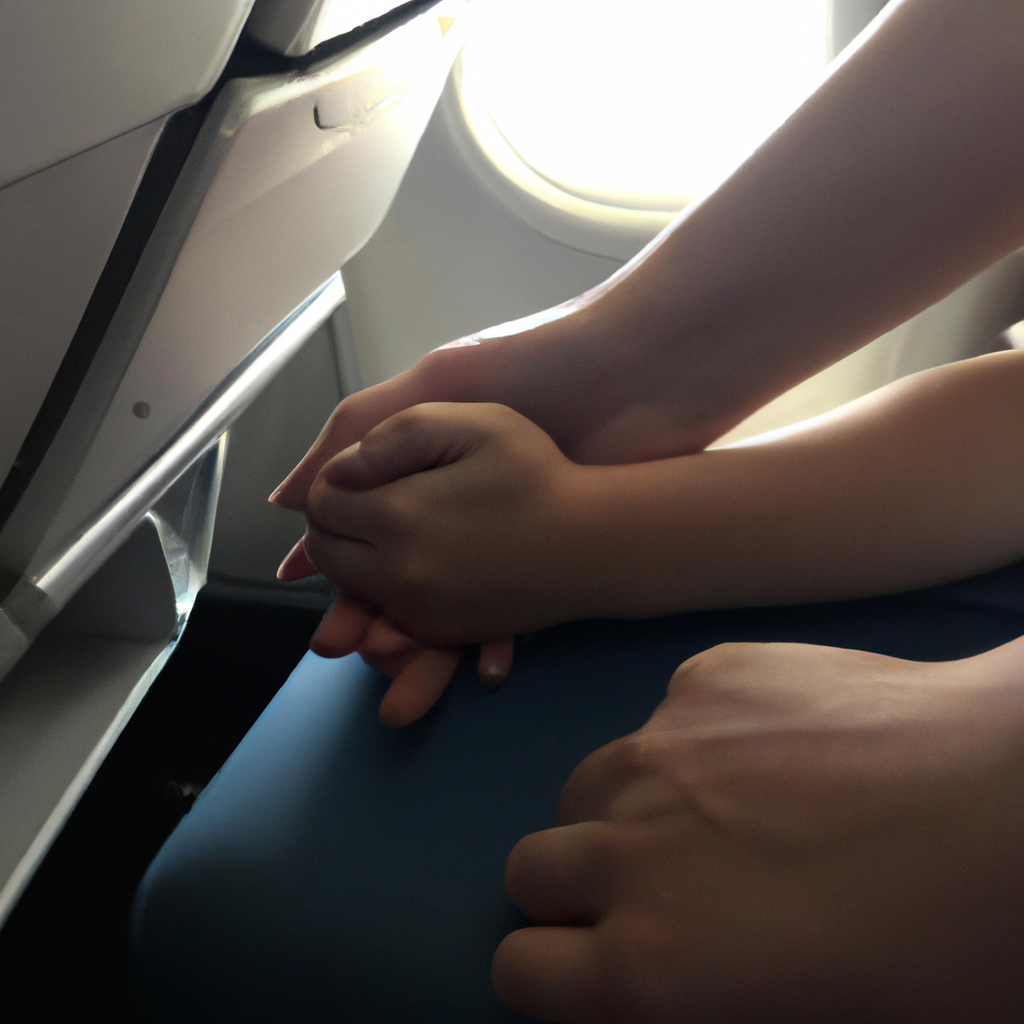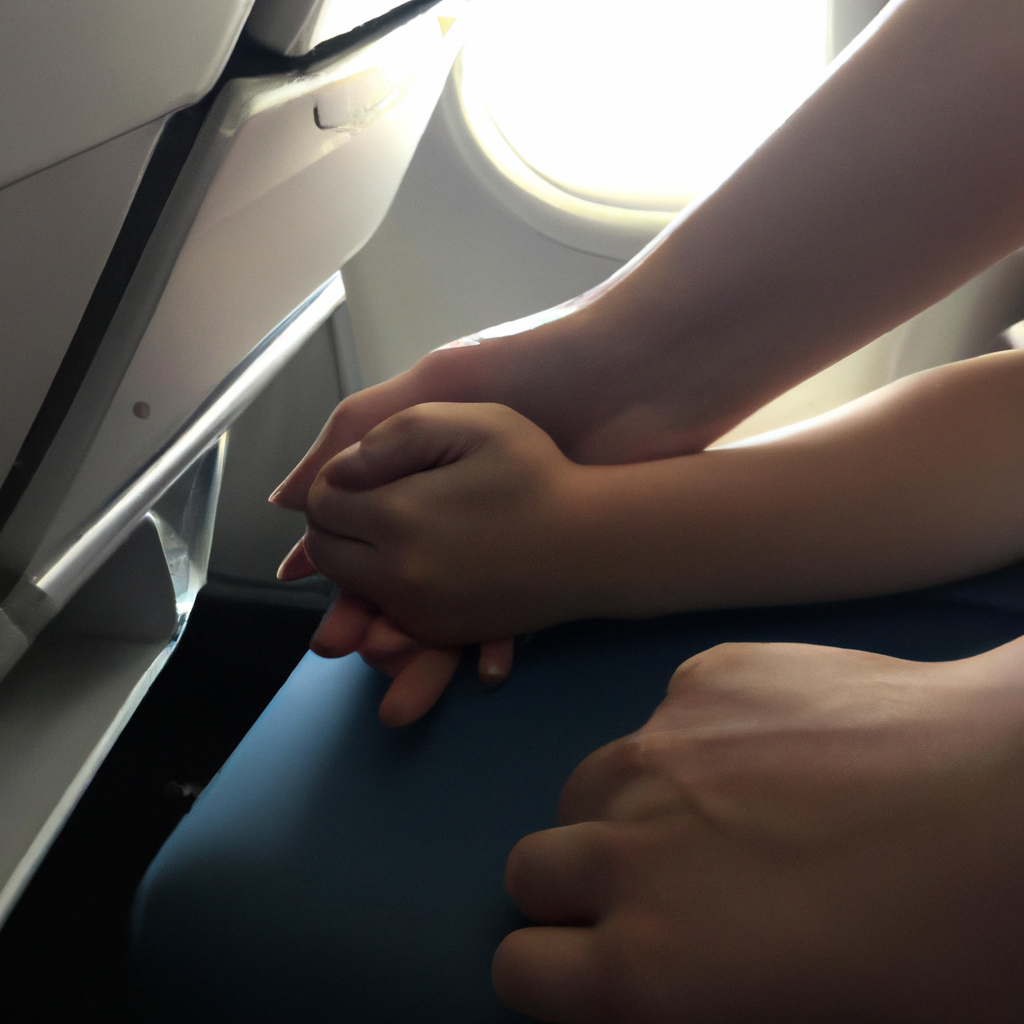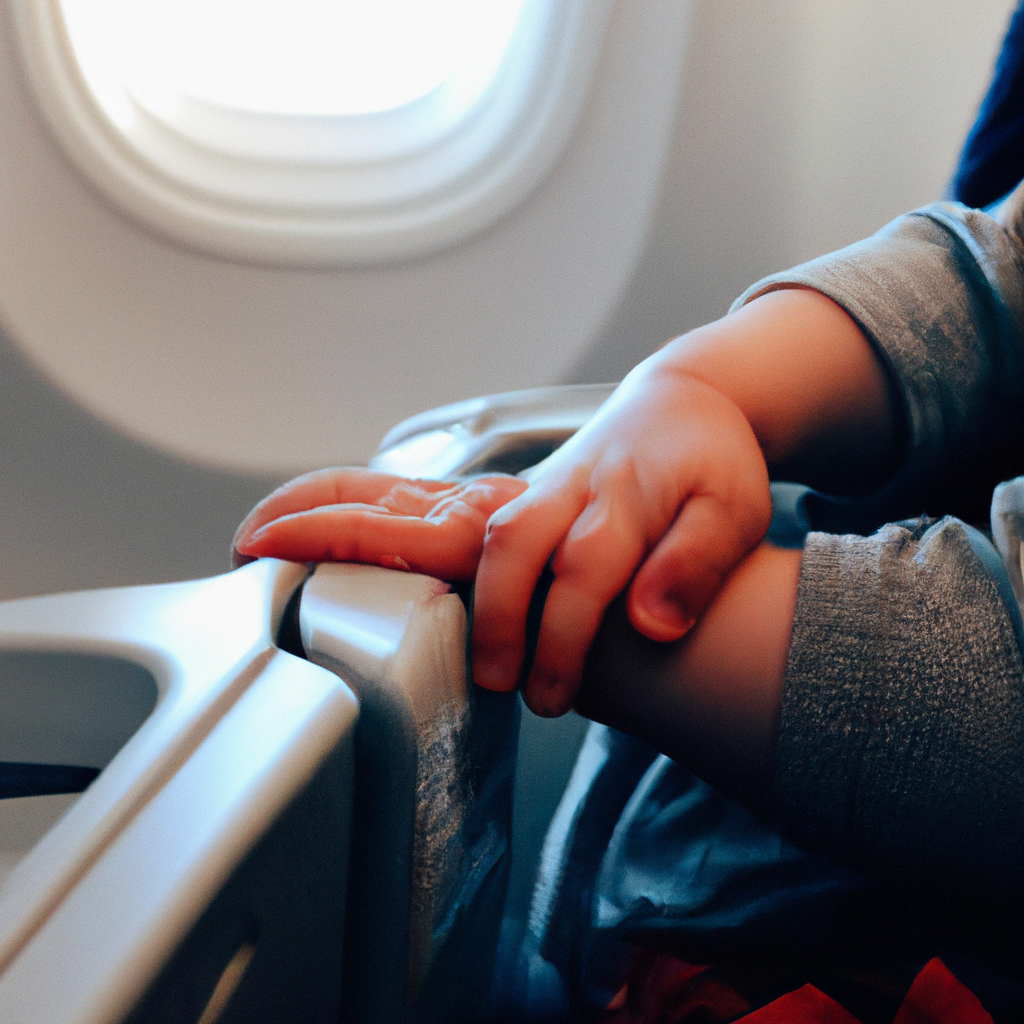
Flying with a child can be an adventure on its own, but have you ever wondered which age can be the most challenging for that journey? From dealing with the fussiness of a toddler to keeping a restless teenager entertained, each age presents its own unique set of hurdles when it comes to flying with children. In this article, we will explore the different ages and stages of childhood and discuss the factors that make each age particularly challenging for flying. So, fasten your seatbelts and get ready to learn about the ups and downs of flying with children at different ages.
Infant (0-12 months)
Physical challenges
Flying with an infant can present a unique set of physical challenges. Infants are still developing their motor skills, so sitting for long periods of time in a cramped airplane seat can be uncomfortable for them. Their bodies are also more sensitive to changes in altitude, which can cause discomfort or pain in their ears. Additionally, infants may experience difficulty regulating their body temperature on a plane, which can lead to fussiness or discomfort.
Feeding difficulties
Feeding an infant during a flight can be a challenging task. Breastfeeding or bottle-feeding may be disrupted due to the limited space and turbulence on the plane. It can be difficult to find a comfortable and discreet position to nurse or bottle-feed, and the noise and distractions of the aircraft can make it hard for the infant to focus on feeding. Additionally, if a baby is on a formula or solid food diet, it can be cumbersome to pack and prepare all the necessary supplies for the duration of the flight.
Crying and fussiness
Infants are infamous for their crying and fussiness, and this can be particularly challenging during a flight. The unfamiliar environment, changes in air pressure, and discomfort from sitting for prolonged periods can all contribute to an infant’s restlessness and irritability. Furthermore, the noise and vibrations of the plane can make it difficult for babies to sleep, leading to exhaustion and crankiness. Managing and soothing a crying or fussy baby while confined to a small space can be emotionally draining for both the parents and the fellow passengers.
Toddler (1-3 years)
Constant movement
Toddlers are known for their boundless energy and constant need to move. However, being confined to a small airplane seat can be a major challenge for them. The restricted space can make it difficult for toddlers to stretch their legs and expend their energy. This can lead to restlessness, frustration, and increased difficulty in keeping them entertained.
Separation anxiety
Toddlers often experience separation anxiety, and being separated from their familiar environment and routine can be especially distressing for them during a flight. The unfamiliar surroundings, the presence of strangers, and the absence of their usual toys or comfort objects can intensify their feelings of anxiety, leading to clinginess and increased dependence on their parents.
Short attention span
Toddlers are notorious for their short attention spans, and this can pose a challenge during a flight. With limited space and minimal entertainment options, toddlers may quickly become bored and easily distracted. It can be a struggle to keep them engaged and entertained for the duration of the flight, making it more challenging for parents to ensure a smooth and peaceful journey.

Preschooler (3-5 years)
Restlessness
Preschoolers are bursting with energy and curiosity, which can make it difficult for them to sit still and remain calm during a flight. The confined space of an airplane can exacerbate their restlessness, leading to fidgeting, squirming, and an overall sense of agitation. This restlessness can be challenging for parents to manage, as they strive to maintain a peaceful and comfortable environment for both their child and fellow passengers.
Inability to express needs
Preschoolers are still developing their communication skills, and this can pose a challenge during a flight. They may struggle to effectively express their needs or communicate their discomfort, leading to frustration and potential meltdowns. This can be particularly challenging for parents, who are attempting to decipher their child’s cues and meet their needs in a confined space without the usual resources or comforts of home.
Potential for tantrums
The preschool years are notorious for tantrums, and these outbursts can be particularly challenging to handle during a flight. The unfamiliar environment, the lack of control or routine, and the potential overstimulation can all contribute to emotional meltdowns. Dealing with a tantruming preschooler in the limited space of an airplane can be stressful and tiring for parents and disruptive to fellow passengers.
Early Elementary School (6-8 years)
Restlessness and boredom
At this age, children have an increasing need for movement and stimulation, making it challenging for them to sit still for long periods on a plane. The lack of space to play and move around can lead to restlessness and boredom. This restlessness can be further aggravated by the limited options for entertainment on the flight, as children may quickly exhaust the activities provided and become increasingly difficult to engage.
Increased independence
Children in the early elementary school years often begin to assert their independence, which can present challenges during a flight. They may resist following instructions, such as staying seated or wearing a seatbelt, as they seek to exert their autonomy. The need to constantly monitor and reinforce rules can be tiring for parents, and the potential for conflicts or power struggles can make the journey more challenging for everyone involved.
Lack of patience
Children in this age group may still struggle with patience and impulse control, making it difficult for them to tolerate delays or long periods of inactivity during a flight. The anticipation and excitement of reaching their destination can intensify their impatience, leading to restlessness, frustration, and potential behavioral issues. Managing their expectations and helping them cope with the need for patience can be a significant task for parents during the flight.

Late Elementary School (9-11 years)
Restlessness and boredom
As children reach the later elementary school years, they often become increasingly intolerant of being confined for long periods. The limited space and lack of movement on a plane can lead to restlessness and boredom, as they crave more physical activity and stimulus. Finding ways to keep them engaged, entertained, and mentally stimulated during the flight can be a challenge for parents.
Desire for independence
Children in this age group often desire more independence and autonomy, and this can clash with the limits and restrictions of air travel. They may resist following rules and instructions, as they strive to assert their independence. This can potentially lead to conflicts or power struggles between parents and children, making the flight more challenging for everyone involved.
Peer influence
Late elementary school-age children are increasingly influenced by their peers, and this influence can be particularly prevalent during air travel. The presence of other children or teenagers on the flight can influence their behavior, potentially leading to more restlessness, excitement, or even peer pressure to engage in inappropriate conduct. Managing their interactions with peers and setting boundaries can be essential for maintaining a peaceful and safe environment on the plane.
Early Adolescence (12-14 years)
Desire for freedom
Early adolescence is a period characterized by a growing desire for independence and autonomy. This desire for freedom can clash with the constraints and regulations of air travel. Teenagers may resist following instructions or adhering to rules, as they seek to assert their individuality. Negotiating this desire for autonomy while ensuring their safety and compliance with airline regulations can be a complex task for parents.
Peer influence
Peer influence becomes increasingly significant during early adolescence, and this influence can impact behavior during air travel. The presence of friends or peers on the same flight can lead to heightened excitement, restlessness, or potentially even risk-taking behavior. Teenagers may be more inclined to engage in disruptive or inappropriate conduct if influenced or encouraged by their peers. Maintaining a balance between their desire for social interaction and the need for responsible behavior is crucial during this stage.
Defiance
Early adolescents often exhibit a degree of defiance, as they explore their boundaries and challenge authority. This defiance can manifest during air travel, as they may resist following rules or instructions. The potential for conflicts between parents and teenagers can be heightened during a flight, leading to more tension and stress. Finding ways to address their defiance while maintaining a positive and harmonious atmosphere on the plane can be a delicate balancing act for parents.

Mid-Adolescence (15-17 years)
Rebellion and independence
Mid-adolescence is a period marked by increased rebellion and a quest for independence. Teenagers at this stage may consciously challenge rules and authority figures, seeking to establish their own identity separate from their parents. This can make air travel challenging, as they may resist compliance with instructions or express a desire to assert their independence in ways that could disrupt the flight. Balancing their need for autonomy with the need for responsible behavior is crucial during this stage.
Peer influence
Peer influence continues to play a significant role in mid-adolescence, and this influence can be particularly influential during air travel. The presence of friends or acquaintances on the flight can amplify excitement, restlessness, or even encourage risky behaviors. Teenagers may be more prone to seeking social interaction and engaging in disruptive conduct in the presence of their peers. Setting boundaries and fostering responsible decision-making becomes even more critical during air travel in this stage.
Risk-taking behavior
Mid-adolescents are often inclined towards risk-taking behaviors, driven by a sense of invincibility and the desire for new experiences. This propensity for risk can be challenging during air travel, as teenagers may be more likely to engage in activities that may compromise their safety or disrupt the flight. Balancing their need for exploration and boundary-pushing with a safe and considerate travel experience requires open communication, clear expectations, and effective discipline strategies.
Late Adolescence (18-20 years)
Desire for independence
Late adolescence marks the transition into adulthood, and young adults at this stage often have a strong desire for independence. Air travel provides an opportunity for them to navigate the journey on their own, seeking to assert their autonomy and self-reliance. However, this desire for independence can potentially clash with logistical challenges, such as navigating airport procedures, managing travel documents, and facing unexpected delays or disruptions.
Lack of interest
Late adolescents may exhibit a lack of interest in the practicalities and logistics of air travel. They may struggle with prioritizing and organizing necessary preparations, such as packing efficiently, checking in, or keeping track of belongings. Their preoccupation with socializing, personal interests, or new experiences can lead to distractions or oversights during the travel process, potentially causing inconvenience or stress.
Potential for distractions
Late adolescents are often immersed in a myriad of interests, social connections, and digital distractions. The constant connectivity and allure of technology can make it challenging for them to fully engage in the travel experience or adhere to necessary procedures. The potential for distractions, such as excessive smartphone use or preoccupation with entertainment, can contribute to delays, miscommunications, or even safety issues during air travel.

Early Adulthood (21-25 years)
Desire for independence
Early adulthood is a period of transition and personal growth, marked by a strong desire for independence and self-reliance. Young adults at this stage may seek to assert their autonomy during air travel, aiming to navigate the journey with minimal guidance or intervention. However, this desire for independence can be juxtaposed with the overwhelming logistics and responsibilities involved in air travel, such as arranging accommodations, managing finances, or handling unexpected challenges.
Increased responsibility
As young adults enter the early stages of their professional and personal lives, they often face increasing responsibilities and obligations. The demands of work or academic commitments can leave them feeling stressed or overwhelmed, potentially impacting their ability to fully engage in or enjoy the travel experience. Balancing their existing responsibilities with the necessary preparations and adaptability required for air travel can be a significant challenge during this stage.
Potential for distractions
Technology and social media play a prominent role in the lives of young adults, and the allure of digital distractions can be particularly strong during air travel. The constant connectivity and availability of entertainment options can easily divert their attention, making it difficult to fully engage in the journey or stay organized. Distractions can lead to missed opportunities, poor time management, or even disruptions to the travel plans.
Late Adulthood (26+ years)
Potential health issues
Late adulthood is often accompanied by an increased vulnerability to various health issues. Chronic conditions or age-related ailments can pose challenges during air travel, as the limited mobility and potentially uncomfortable seating can exacerbate discomfort or pain. Additionally, older adults may require medication management or specialized assistance, such as accommodations for mobility aids or accessibility requirements. Preparing adequately for potential health needs and taking necessary precautions is essential during air travel in late adulthood.
Increased need for comfort
As individuals age, their need for physical comfort and support becomes more prevalent. The prolonged periods of sitting in cramped airplane seats can contribute to discomfort and stiffness. Late adults may require additional cushions, pillows, or back support to alleviate the strain on their bodies. Taking regular breaks to stretch and move around, as well as selecting appropriate seating options, becomes crucial for ensuring maximum comfort during air travel.
Slower mobility
With aging comes a natural decline in mobility, which can impact the travel experience for older adults. Navigating airports, boarding and disembarking from the plane, and retrieving luggage may become more challenging due to reduced agility or strength. The need for assistance or accommodations, such as wheelchair assistance or priority boarding, may be necessary to ensure a smooth and stress-free journey. Planning ahead and communicating with airline staff to address specific mobility concerns is essential to make air travel more manageable for late adults.




